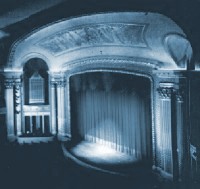 Setting the Stage
Setting the Stage
When choosing an object for a material culture study, I felt it was important to select something with which I had some experience. I decided that pointe shoes would make a good choice for several reasons, but primarily I chose them due to my own intense memories of practising ballet. I remember waiting for the day when I would be strong enough as a dancer to dance en pointe. I also remember how disillusioned I was when I first put them on, or more importantly, took them off to find my feet reduced to bloody stumps. I often wondered why anyone would have invented these things, let alone worn them. Pointe shoes, despite appearances, are extremely cumbersome and it would be an understatement to call them "uncomfortable." While I would agree that technique done en pointe has an ethereal, 'floating' quality, I couldn't help but wonder if suffering for the sake of one's art wasn't being taken to far in this instance. It also struck me as peculiar that only women practise techniques en pointe. Perhaps there were practical reasons for this that I was unaware of but I couldn't help but wonder why it was that women would train in this art specifically and almost entirely to the exclusion of men.
These questions directed my research to the first half of the nineteenth
century, when pointe work first came into use. My study of this period
revealed some answers to my questions and are explored in the following
pages. What is somewhat surprising is that very little has changed
over the
last 150 years.